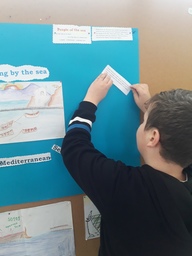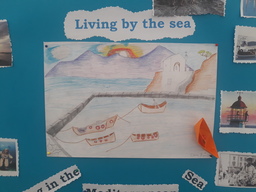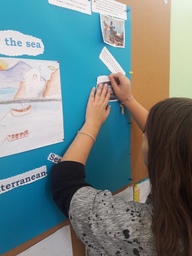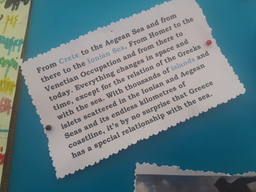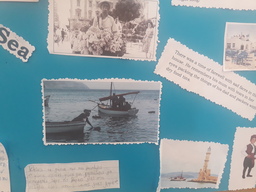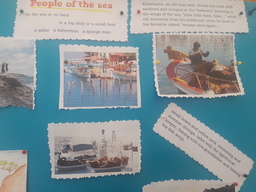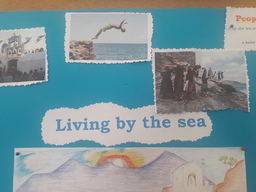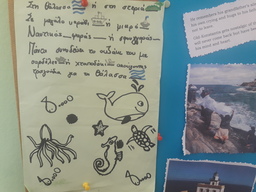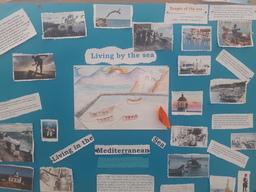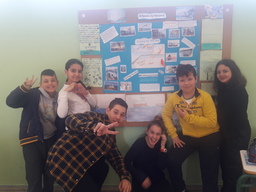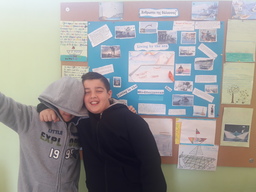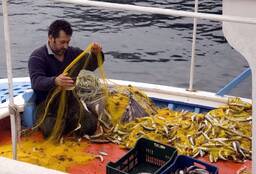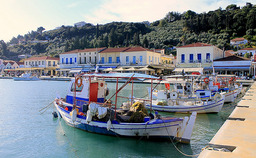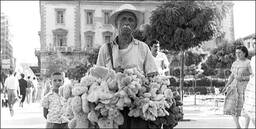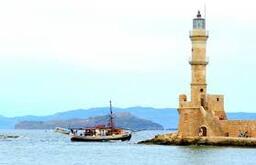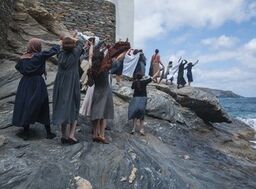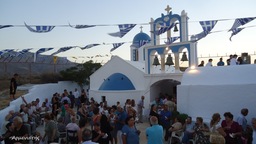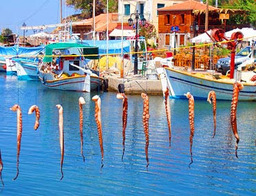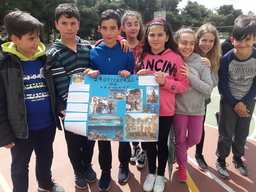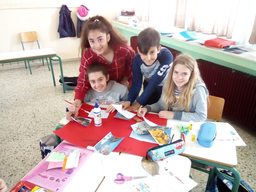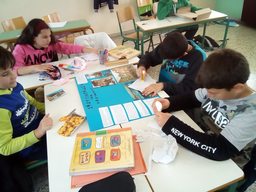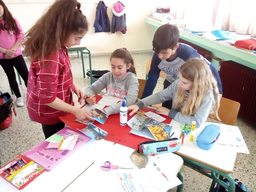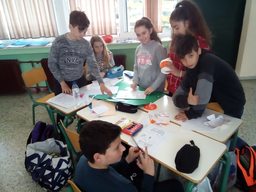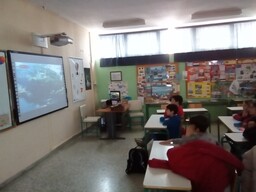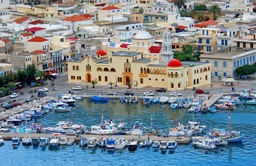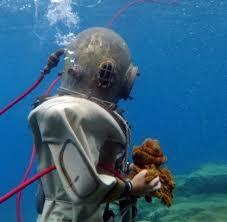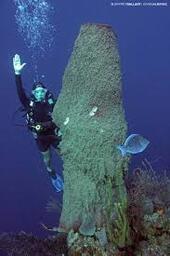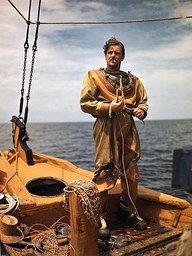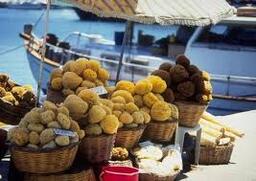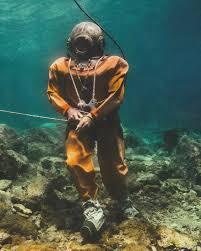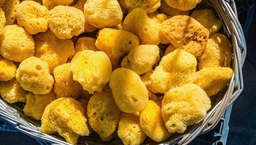Living by the sea
Άνθρωποι της θάλασσας- Living by the sea
"The people who live on the coastline of the Mediterannean Sea, usually work as fishermen, sailors, merchants, olive oil producers, vine growers and now they also work with tourism and ecotourism. The same applies for the people who live on the Greek islands and seaside villages "
Eleni,11 years old
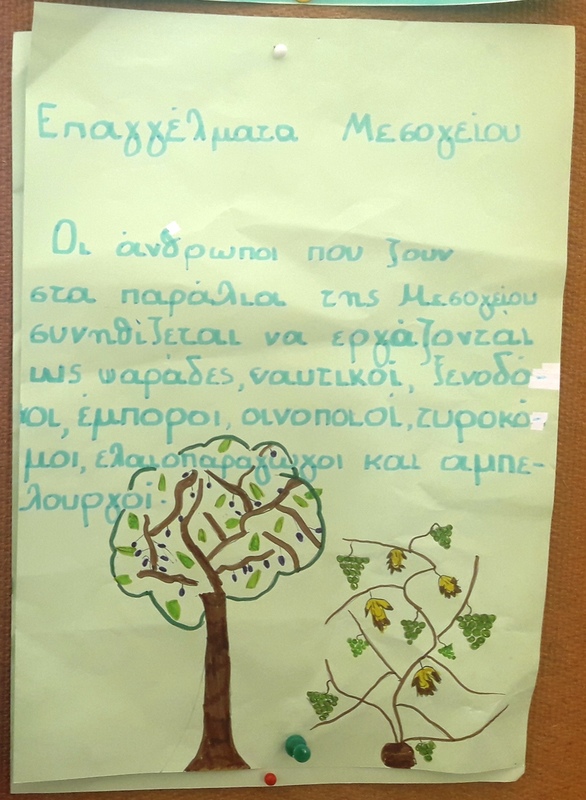
Eleni is a pupil of the 6th grade and together with her classmates decided to work on this project.
They collected information about the sea proffessions and the life of the people who live by the seaside.
They named their project "Living by the sea", they gathered pictures and they wrote the story of an old man, named Konstantis.
“Konstantis, the old man”
“It is Sunday morning and Konstantis, an old-man now, drinks his ouzo with sardines and octopuses at the kafenio * coffee house , listening to a sea song, “Blow little wind, blow…” while old memories from his childhood when he lived on his favourite island become alive again: small boats, yellow nets, swimming and diving with the other boys, fishing with his grandfather, talking with the lighthouse keeper in the sunset. He has still got the taste of his mum’s fish soup! Happy moments!
But sad memories also fill his eyes with tears: the time of farewell with sad faces in the house. He remembers his Mum with tears in her eyes packing his Dad’s things for his next taxithi*sea trip in the faraway seas. His father was a captain in a cargo ship and Konstantis might not see him for a long time, maybe months or years. He remembers his grandfather’s silence, his own crying and his hugs to his father, begging him not to leave.
He remembers stories about faraway seas and harbours, stories about risky sponge men and sad farewells; but then the joyful welcomes and the fun he had in the fairs of his island with all that music and dancing all day and night long!
Konstantis, an old man now, gets nostalgic of those days. He knows that those days will not come back, but they will stay alive in his mind and heart as long as he lives”.
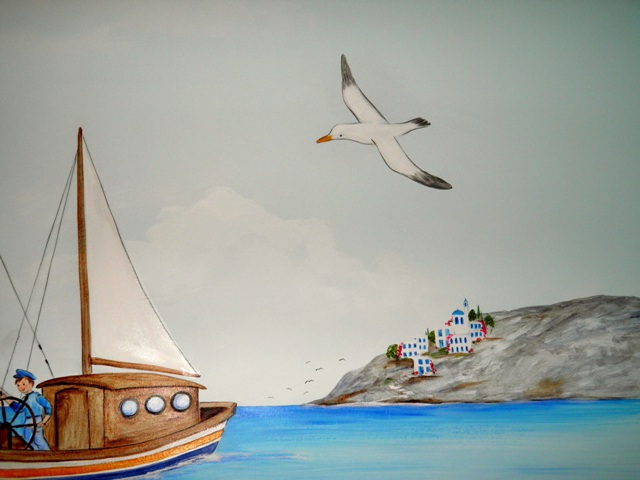
This story is dedicated to every child who has got a grandfather like Konstantis, the old-man.....
P.S.Τhe story depicts the hardships of the Greek people who tried to make a living working with the sea as fishermen or seafarers. They tried to support their families working on small boats or on cargo ships, staying away from their beloved ones for months or even years. They even worked as spongemen diving into the depths of the sea looking for sponges, putting their life at risk. Life wasn't easy for the Greek families for many decades. However there were also happy moments, with the happy sound of the church bells, with a lot of dancing and singing when the men of the island came back home safe with their pockets full of money and presents for everyone, for little Konstantis, too...
Project presentation
The sponge divers on the island of Kalymnos
"The small Dodecanese island of Kalymnos in the Aegean Sea is renowned as the center of the Greek sponge diving industry, which has flourished on the island since the ancient times. Sponge diving has been called the oldest profession on the island of Kalymnos. The first divers of Kalymnos gathered their sponges from the bottom of the sea using the skin diving technique.
In other words, they dived into the sea naked, carrying a skandalopetra (flat stone weighing about 15 kilograms) in order to sink to the sea bottom quickly. The mates of the divers in the boat above would already have ensured the presence of sponges on the sea floor with the help of a glass-bottomed cylindrical tool. The skilled divers would dive up to 30 meters down and stay there three to five minutes gathering the sponges with a special net.
The introduction of the Skafandro ( (a special type diving suit allowing spongemen to dive for a longer time) brought important changes to the sponge diving industry in Greece generally and more specifically on Kalymnos.
Now it was the turn of large fleets consisting of numerous ships to mine for sponges on a large scale.
The ships were launched from the island of Kalymnos to scour the Aegean and the Mediterranean, often staying at sea for as long as six months and visiting places as far away as Syria, Lebanon, Egypt, Libya and Tunisia. However, the use of the standard diving suit brought serious risk and danger to the divers who had to make several dives a day at greater depths without any decompression pauses.
Such cruel conditions caused great damage to the health of the divers, many of them getting paralyzed and some of them even dying of decompression sickness.
Every household on the island could count at least one family member who had either died or been paralyzed during the sponge diving season.
The two World Wars of the 20th century seriously disrupted the sponge diving industry of the island which came to an almost total end after the Second World War.
The 1980s brought the end to the Greek sponge diving industry when most of the sponges in the eastern Mediterranean and the Aegean Sea were found to be infected by pollution.
Now all that remains on Kalymnos of the once-thriving sponge industry is several workshops selling sponges to tourists as well as a nautical museum exhibiting articles relating to the once flourishing sponge diving!"
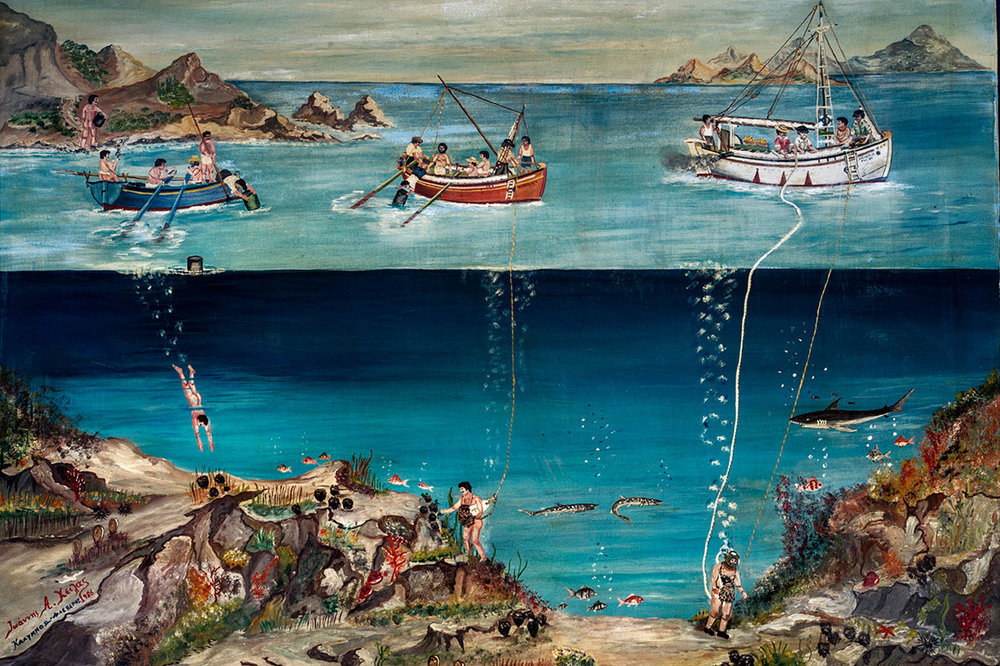
The children also learnt the "the sponge diver's dance" and present it to you in this video.
This dance shows the paralysed spongeman's strong will to survive and have a normal life again.
